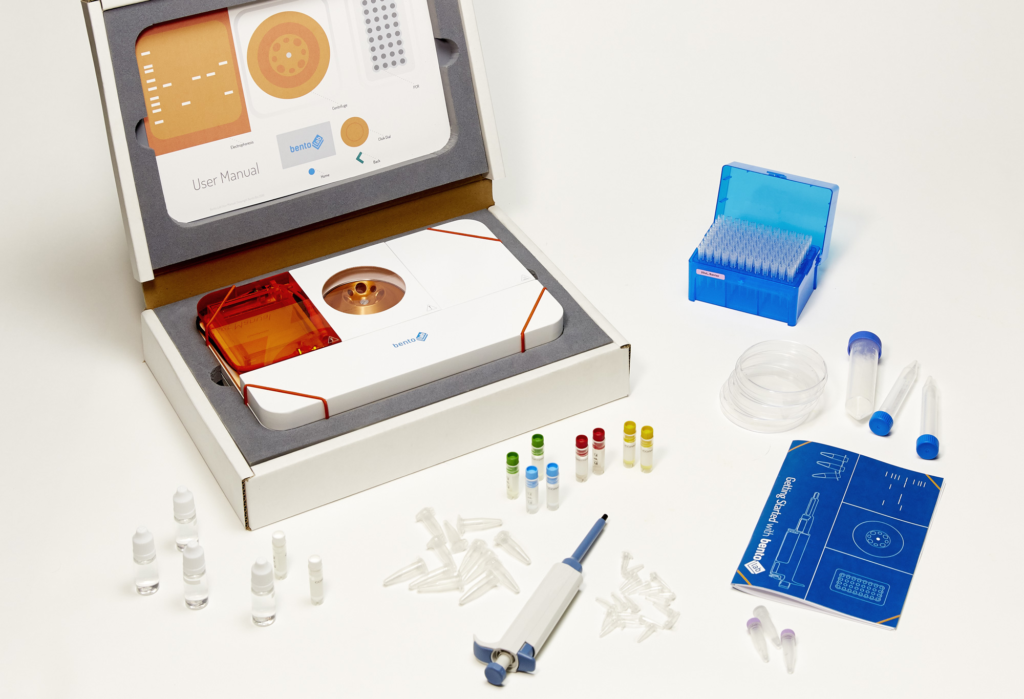 Last last year I ran across the following article in IEEE Spectrum: Tools for Would-Be Biohackers. Since I have a daughter with interests in Biology, I considered getting her one of these “mini-labs” as a Christmas gift. The high cost had me wondering if this was an outrageous idea. It works out that adjusting for inflation, these mini-labs aren’t any more expensive than 8-bit home computers of my youth. My wife asked what seemed like a totally reasonable question, “What are they even good for?” It’s a good question, and it was probably the same question my parents asked about those early personal computers. It got me thinking about whether this kind of Do-It-Yourself home biology (actually genetics) is going to become the same kind of technological revolution that the personal computer became?
Last last year I ran across the following article in IEEE Spectrum: Tools for Would-Be Biohackers. Since I have a daughter with interests in Biology, I considered getting her one of these “mini-labs” as a Christmas gift. The high cost had me wondering if this was an outrageous idea. It works out that adjusting for inflation, these mini-labs aren’t any more expensive than 8-bit home computers of my youth. My wife asked what seemed like a totally reasonable question, “What are they even good for?” It’s a good question, and it was probably the same question my parents asked about those early personal computers. It got me thinking about whether this kind of Do-It-Yourself home biology (actually genetics) is going to become the same kind of technological revolution that the personal computer became?
I don’t have a ready answer. I do know that I’m not willing to dismiss the idea out-of-hand, and I want to learn more. While I think the kits above are really cool from a technological perspective, I’m planning on doing some small scale (i.e. cheaper) things first. It will be interesting to see if I can find an answer to my wife’s original question, and if there is a whole new world of innovation to come.
Here are links to the various mini-labs:
“But Legault also hopes that DIYers will gain enough confidence to invent their own experiments. Using the kits is like using an early microcomputer to play a premade BASIC game, she says, but things really got interesting when hobbyists started creating their own.”
Open ended play or experimentation is the key to actual value / utility. If it’s a “shake and bake” one, two, or three “experiment” kit then it feels to me like a waste.
Consider these two similar situations:
1: an early days home computer was “open ended”. You can use it to do the projects included in the manual that came with the computer, but once you had done all that you could build upon it to do other interesting projects. An ecosystem of magazines, guides, and books sprung up to help teach you how to do much, much more with that same computer without buying anything else.
2: a home chemistry set is also open ended – you have an entire set of (relatively) safe chemicals to play with. The “experiments” included aren’t the entire set of things you can do with the kit but the kits are (typically) designed to avoid the likelihood of dangerous risks (mostly for liability reasons?). As a result realistically there’s probably very little you can do with those chemicals outside of what is already included in the bundled instruction manual. And since every home chemistry kit is slightly different it’s not possible for an ecosystem to grow up around it. What’s more once you do all the experiments included in the kit you’ve probably used up the chemicals. And acquiring more is somewhat difficult – you can’t just pop over to the local store and buy a liter or two of reagents.
These “biohacking” kits seem to be more in the vein of a home chemistry set than a computer.
“But Legault also hopes that DIYers will gain enough confidence to invent their own experiments. Using the kits is like using an early microcomputer to play a premade BASIC game, she says, but things really got interesting when hobbyists started creating their own.”
Open ended play or experimentation is the key to actual value / utility. If it’s a “shake and bake” one, two, or three “experiment” kit then it feels to me like a waste.
Consider these two similar situations:
1: an early days home computer was “open ended”. You can use it to do the projects included in the manual that came with the computer, but once you had done all that you could build upon it to do other interesting projects. An ecosystem of magazines, guides, and books sprung up to help teach you how to do much, much more with that same computer without buying anything else.
2: a home chemistry set is also open ended – you have an entire set of (relatively) safe chemicals to play with. The “experiments” included aren’t the entire set of things you can do with the kit but the kits are (typically) designed to avoid the likelihood of dangerous risks (mostly for liability reasons?). As a result realistically there’s probably very little you can do with those chemicals outside of what is already included in the bundled instruction manual. And since every home chemistry kit is slightly different it’s not possible for an ecosystem to grow up around it. What’s more once you do all the experiments included in the kit you’ve probably used up the chemicals. And acquiring more is somewhat difficult – you can’t just pop over to the local store and buy a liter or two of reagents.
These “biohacking” kits seem to be more in the vein of a home chemistry set than a computer.